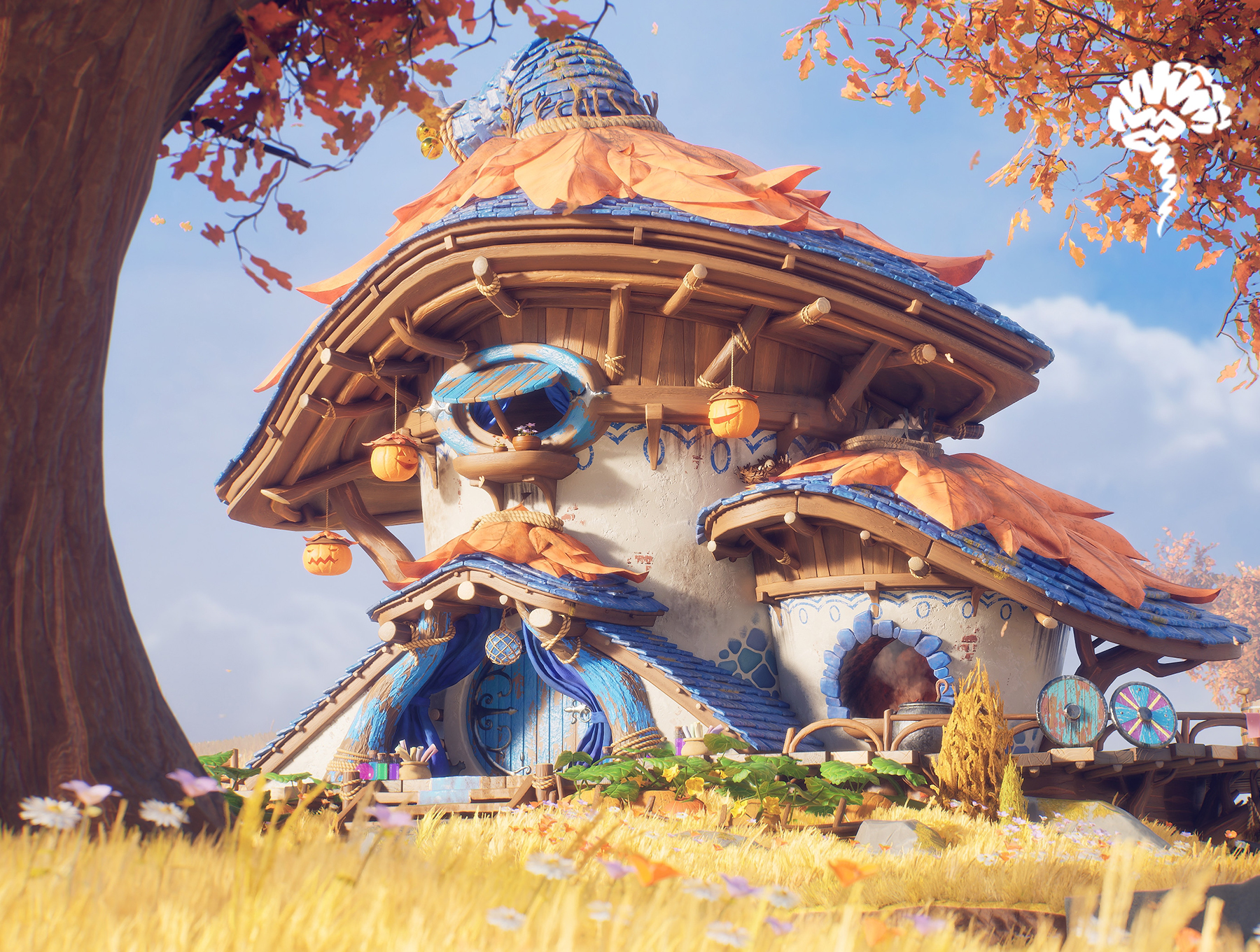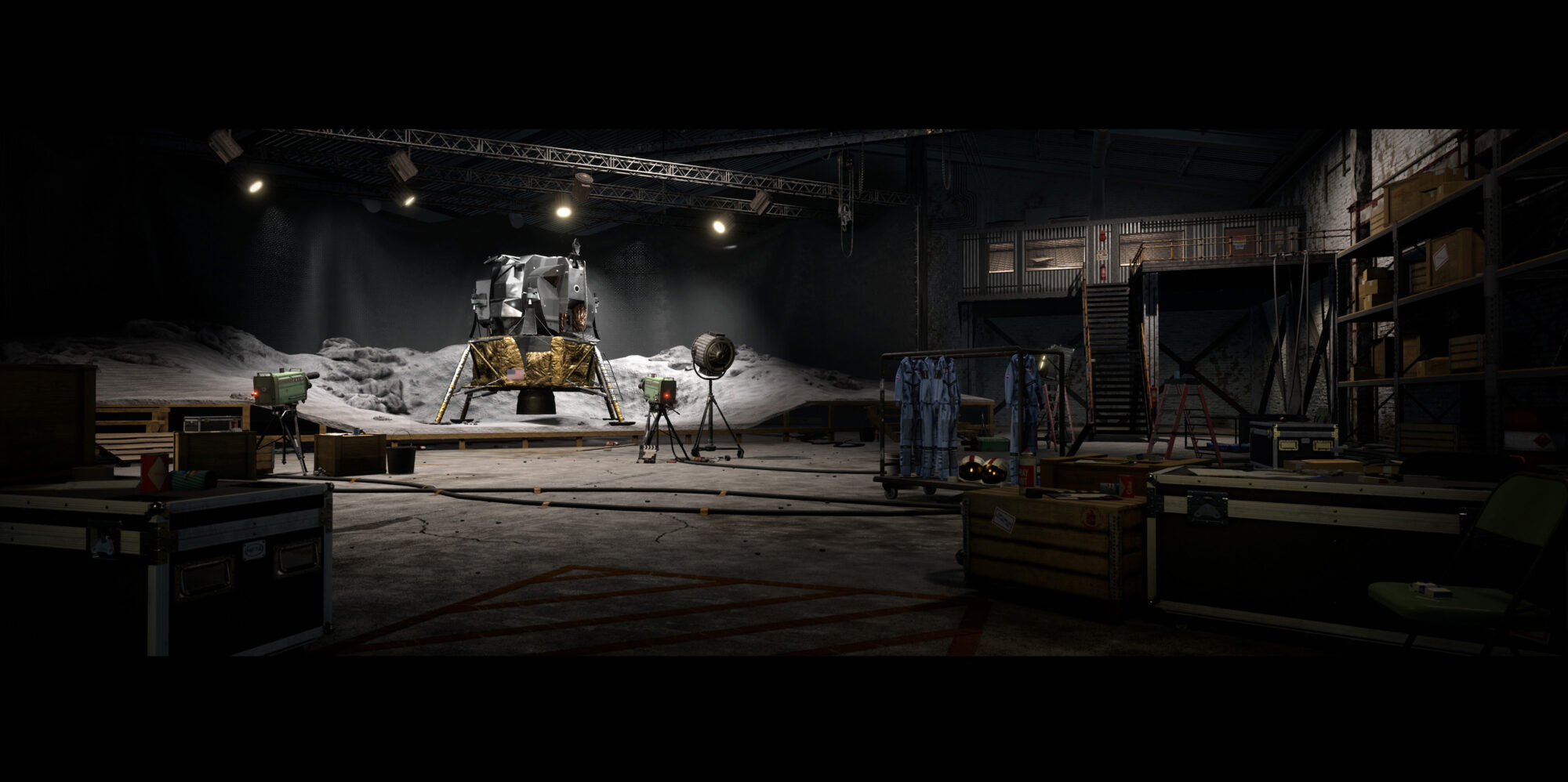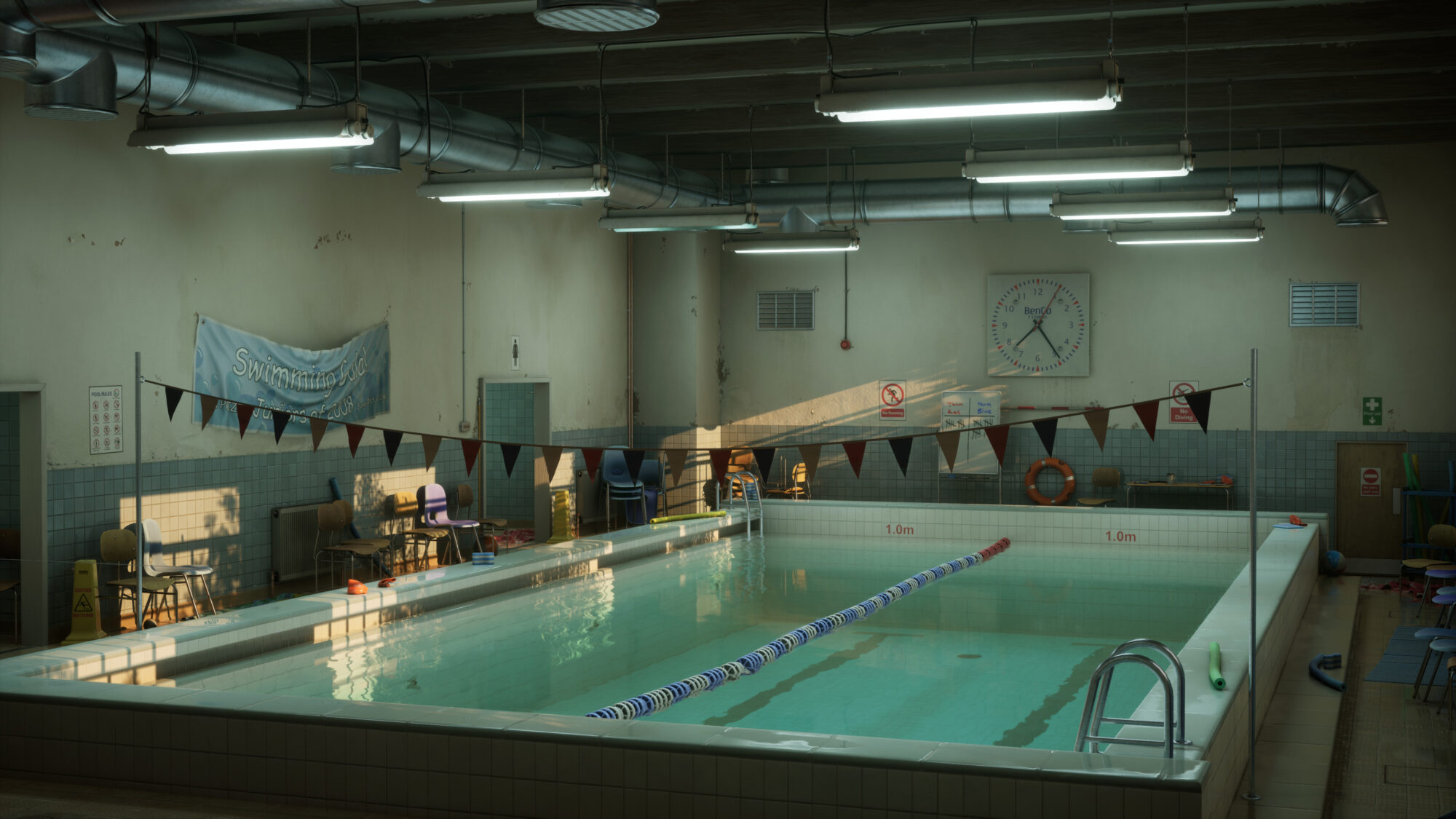Gnome Village
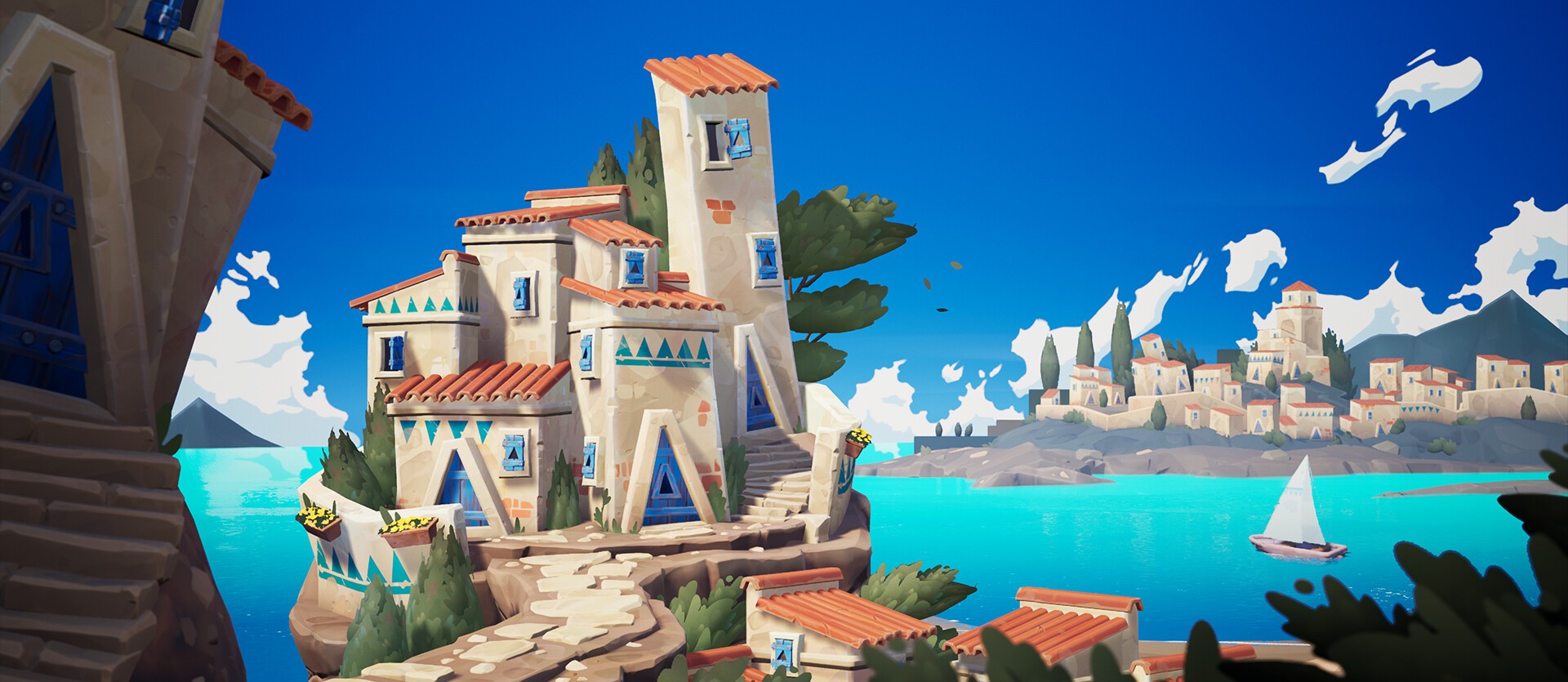

Introduction
Hi everyone! My name’s Sophie Rose Stübinger and I’m a 3D environment artist currently living in Germany. In the past, I worked on games like Party Animals by Recreate Games and Fortnite by Epic Games.
This year, I was super stoked to land first place in the Artstation community challenge “Dragon’s Rise: The Forgotten Realms” in the Game Environment/Level Art (real-time) category.
Project & Concept
When I was looking for a concept to work with for the challenge, I saw Delphin Casado’s Gnome Village submission and immediately wondered what it would look like in 3D.
I feel like this is always a good sign and makes it easier to decide what concept you wanna go with.

I have a soft spot for architecture and vibrant colors and I found her concept to have exactly that. At first, the size of the environment seemed a bit daunting, considering that we only had roughly four weeks to work on our submission.
But one of the goals I set myself for the challenge was to not overthink everything too much and just see what I could achieve in the given time by focusing on the overall picture rather than small details. So I decided to dive right in!

Pre-Production
Before getting into modeling and blocking everything out, it’s good to get yourself a clear overview of what you need to do.
So, I started to make a breakdown of the concept and look for repeating elements that could be done with modular pieces, trim sheets and tileable textures, etc. to save time and work more efficiently.
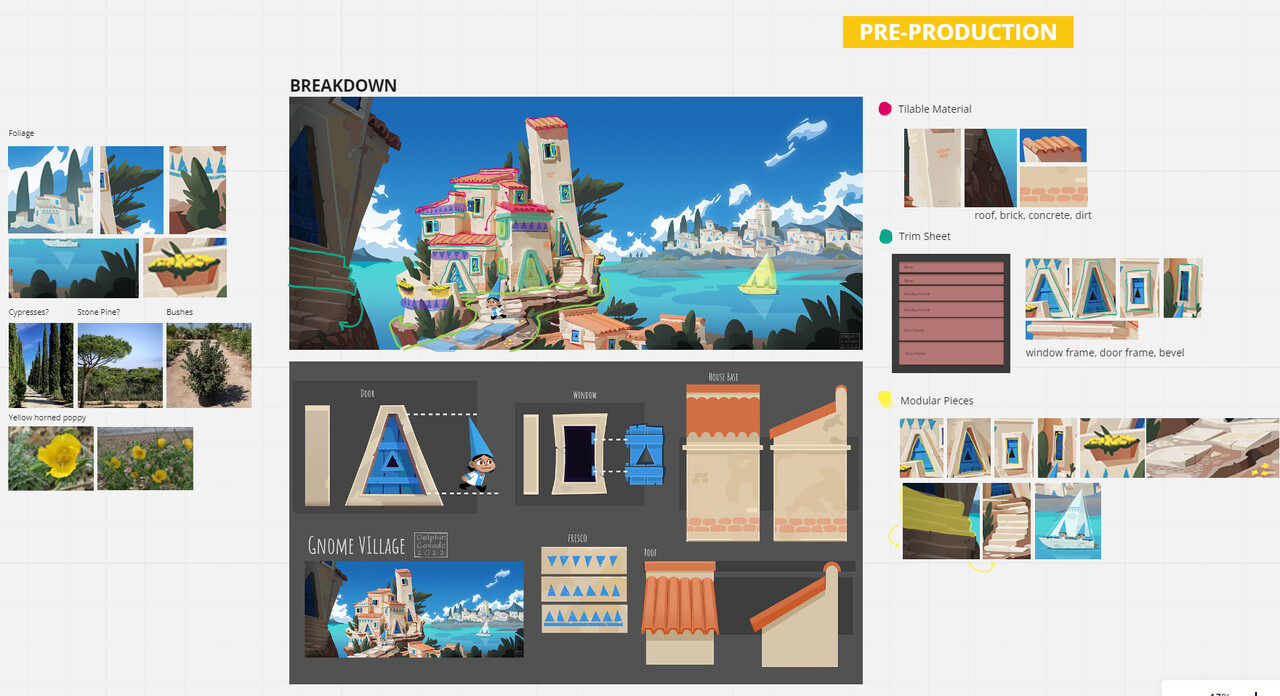
The callout sheet that Delphin provided helped a lot to break it down further and allowed me to work with some modular pieces that I could place in their respective location to fit the concept.
However, since I was planning to view the scene from a specific angle, I decided to give the objects in the front some more attention, e.g by making different variants of the doors, windows and bevels of the houses.
Because I still wanted to work smart, not hard, I decided to go with a trim sheet for those elements and do the majority of the scene with tileable textures or a blend between tileable textures and uniquely baked normal maps.
Blockout

Usually, I start to block out the main shapes in Blender before bringing them into Unreal and start iterating on the position/location of the assets to fit the concept.
This time, I decided to block everything out in Unreal Engine and export the scene to Blender to refine it more. It worked surprisingly well, especially because I already had my camera positioned and could adjust everything to fit the concept without having to re-import the meshes over and over again.
Master Material

Pretty much all of the assets for the houses (windows, doors, bevels, walls) have different instances of the same material.
I set it up in a way that makes it easy to switch out decals for the fresco on the walls, remove them and make iterations without having to go back and forth between Substance Painter and Unreal Engine or create a bunch of unique textures for each house. Instead, I just have a bunch of Material Instances.
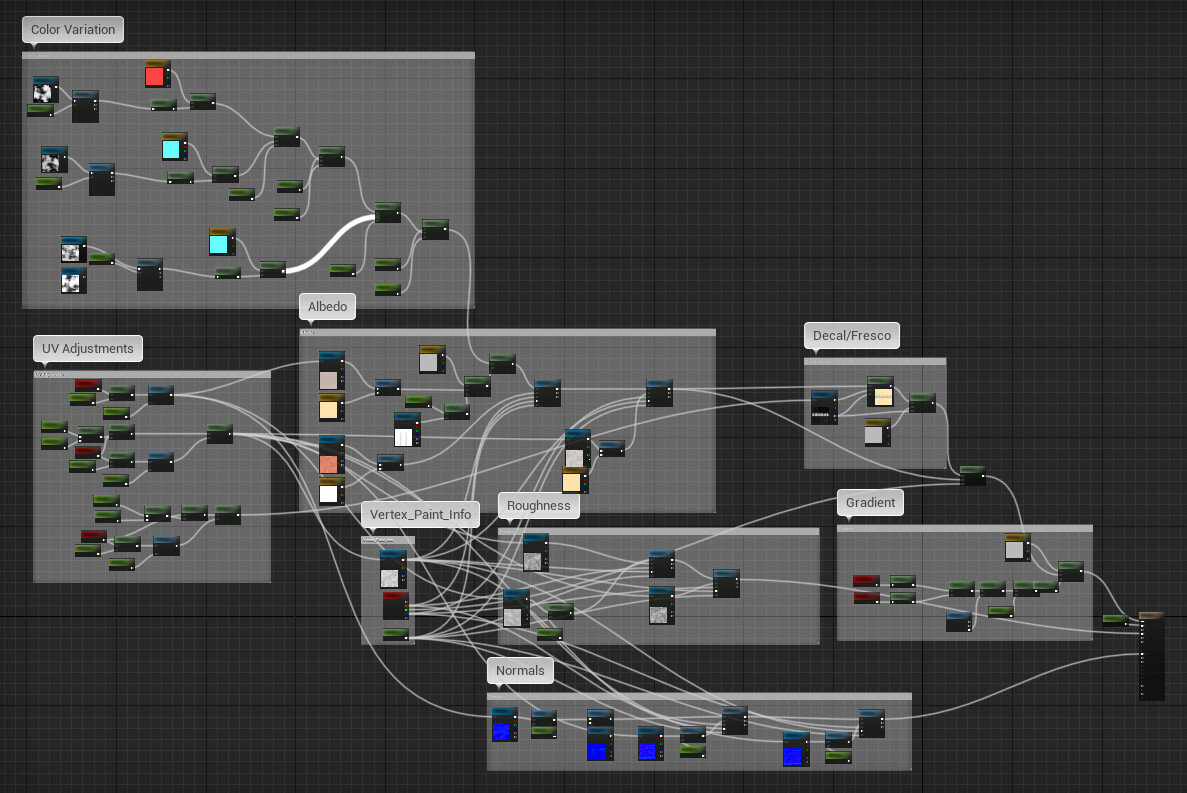
Another thing I added is a subtle bottom-to-top gradient, vertex paint for two variants of bricks and some color variation for some macro details.
The latter was probably a bit overkill and could have been worked into the wall material/texture itself since the surfaces aren’t that large but after reading Santeri Soininen’s breakdown of his Fantasy City and trying it out in a previous project of mine, I wanted to include it again since it makes everything look less repetitive.
Sculpting
For the material treatment, I tried to keep the bigger picture in mind and that the camera is relatively far away. So, I decided to incorporate a lot of macro details by sculpting bold damage onto the edges of the walls.
I then made use of the 2nd UV channel and blended the baked Normal and Mask Map for the curvature together with my tiling material of the wall in-engine which also took care of some micro details when coming closer.

Here, I mostly worked with the default TrimSmoothBorder Brush and changed the Alpha to a square, similar to how you would sculpt stones to have some nice, bold edges in there.
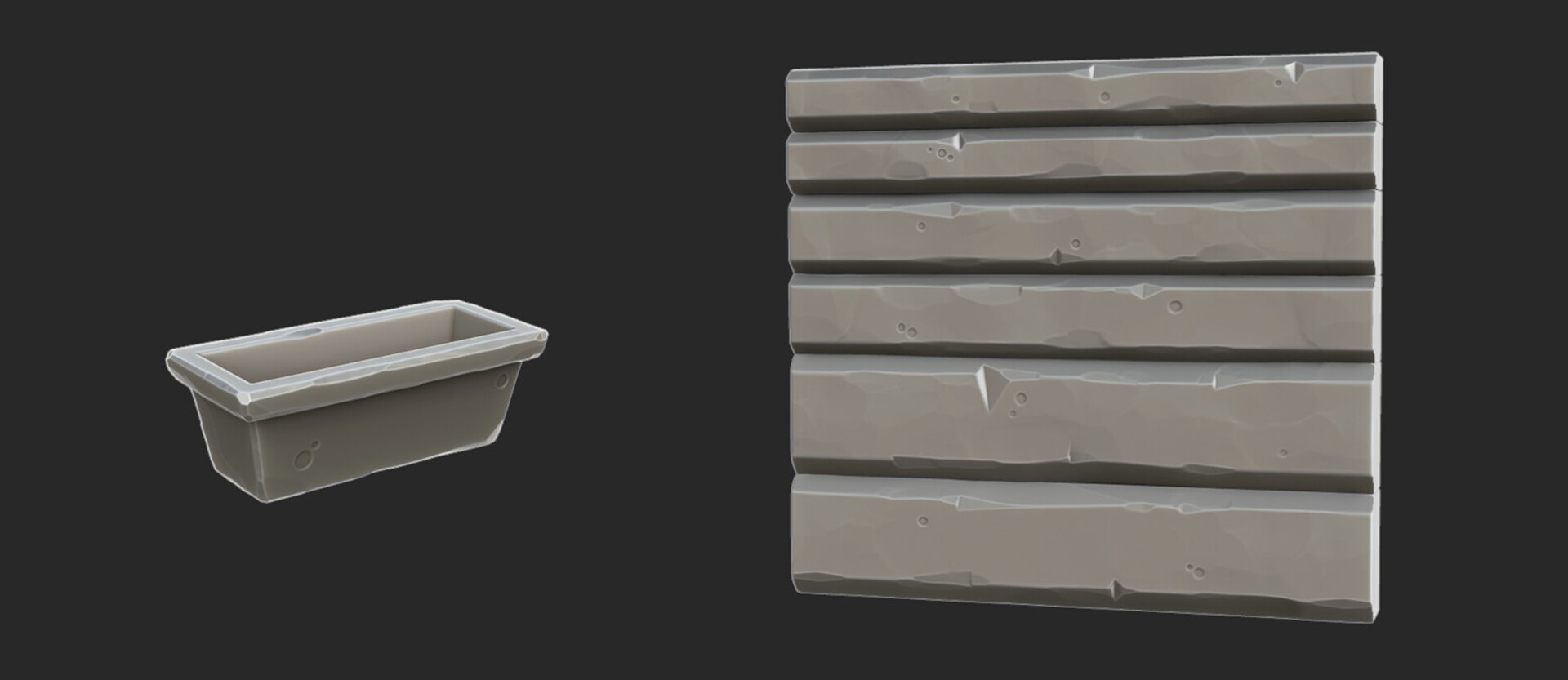
I used this approach for pretty much all of the assets and additionally added some chips here and there with the Clip Curve to have some more damage and detail to make the surface more interesting. In a way, you’re your own Art Director and you can pick and choose what style you want to go for.
Whatever style you end up with, I think it’s just important to keep a cohesive look throughout your scene. What helps me a lot with this is to always compare your assets with each other and update them in your scene regularly to spot any indifferences that need to be reworked.
Texturing
The texturing process was pretty straight forward.

I started with a gradient map as my base and gradually added more details by having some different colored AO, gradients and some hand-painted touches.
I feel like it’s always a good thing to think about your asset and ask yourself how long it’s been there and what’s the asset’s purpose. So, the weathering and age should also be somewhat visible in your asset.

After that, I added some brushstrokes to give it more variety in color and luminosity. I did this with pretty much every asset.
Foliage
At first, I struggled a bit with the visualization of the vegetation since I wanted to keep the slightly cartoonish, 2D look of the concept.
After some trial and error, I took a look at Glen Fox’s Carrot Tree Forest project and really liked the style of his foliage. So, I tried a similar approach which was to have relatively large cards to form the main shape of the bushes and foliage for the tree.
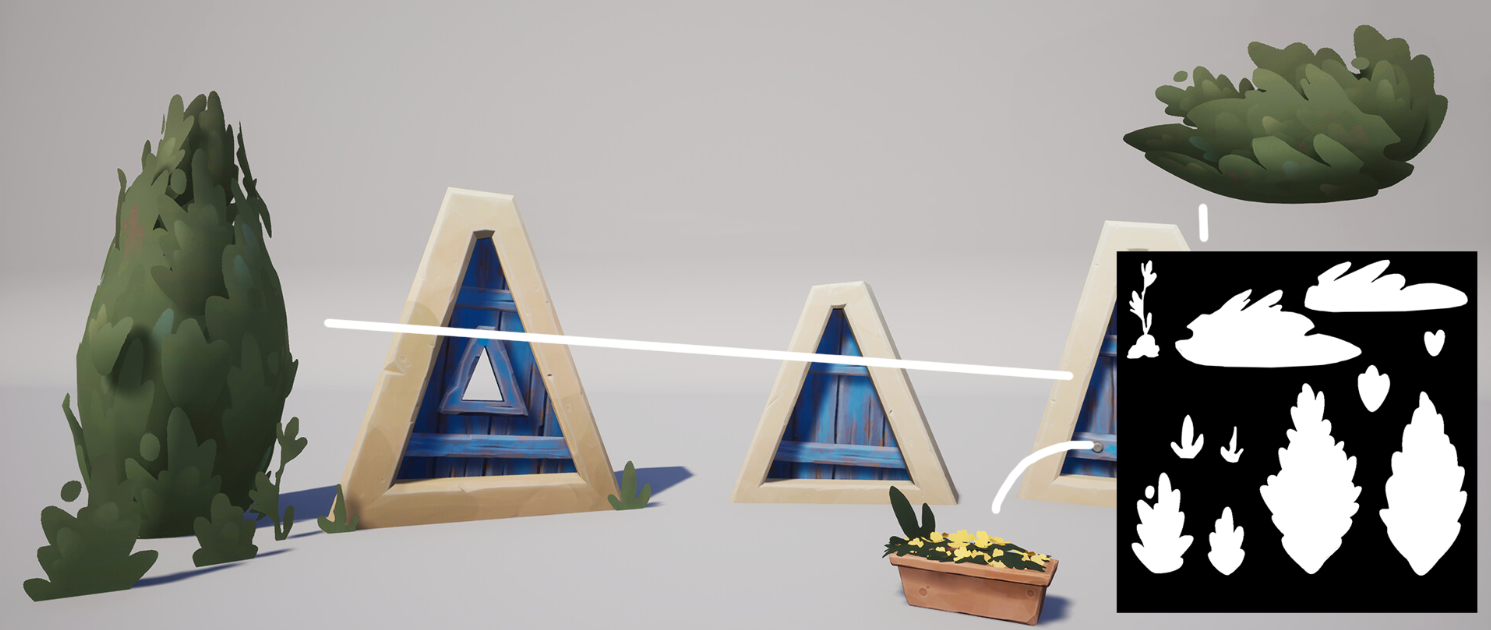
I also added some gradients for the simple grass wind node to make sure the bottom isn’t moving and only the top would wiggle in the wind.

Blueprint & Animation
To breathe in some more life, I tried to have the windows move a bit in combination with the wind since the houses are quite high up on a cliff. For that, I made a blueprint that’s pretty simple and straightforward. Though, I had to play around with it at first to figure out what the right parameters are and not have the windows do a 360.
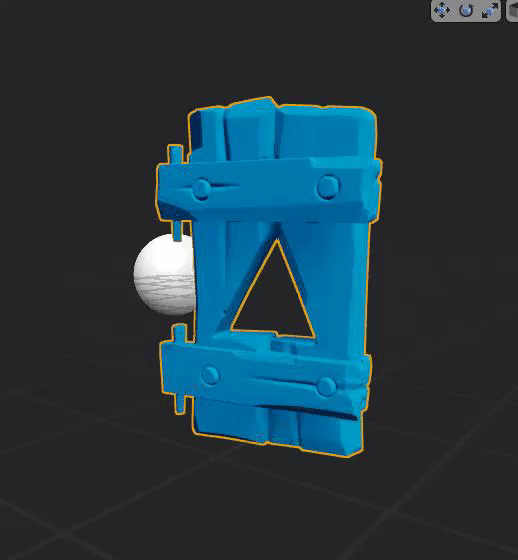

For the sky, I kept Unreal’s default skybox, removed the clouds and changed the color to fit the concept. I then painted the clouds in Photoshop, mapped the texture to some cards and placed them in-engine.
To have the effect of them moving, I simply animated them to move from left to right or wherever my wind direction is going.
Lighting
The lighting is quite simple since it’s dynamically lit. I have one main light source in the scene that has a slightly yellow tint and another one facing the opposite direction to brighten up the shadows a bit with a slight blueish, purple tint. Additionally, I have some movable point lights for areas that were a tad too dark.
Post Mortem
Overall, I’m pretty happy with the outcome of the project, especially since the schedule was quite tight. Still, there are some things that I would change or work on further were I to do it again or continue.
But for the time that was given, I’m pretty happy with what I could achieve.
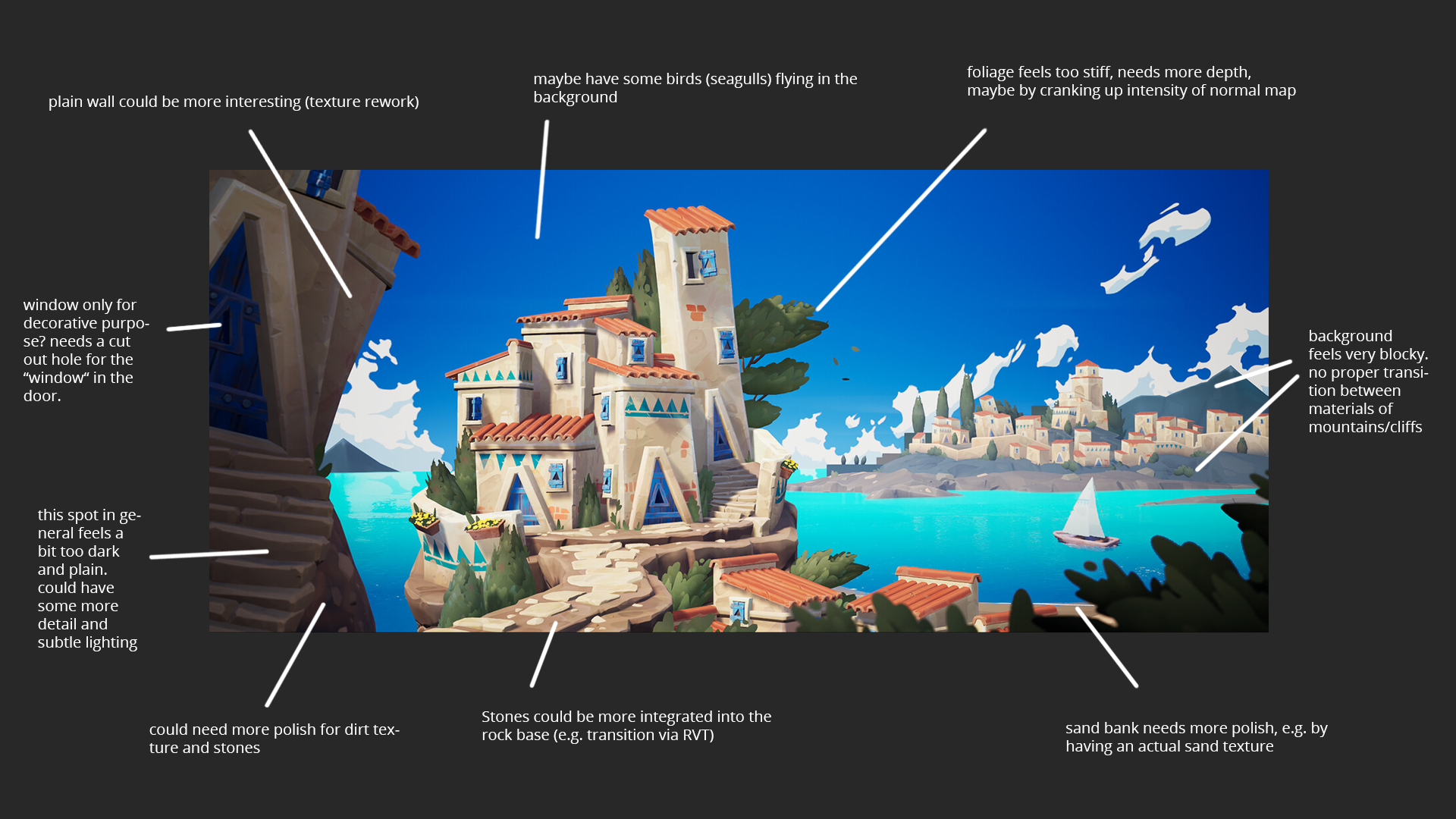
Afterwords
One thing I learned by working on this project is to not overthink everything too much and focus on the bigger picture. Some projects can be quite intimidating because of their size or the number of things you have to do which can also be quite overwhelming.
But regardless of whether it is a personal project, a submission for a challenge, or actual work, I feel like putting that doubt aside and just working on it while trying to do your best and enjoying the process is a good way of dealing with the situation. You have to have some faith in yourself and your skillset and in most cases, that’s already half the work done.
Thank you so much to Games Artist for inviting me to talk about this project and huge thanks to my artist’s friends for their support throughout the challenge!
In case you have any questions or just want to chat, you can find me on:



